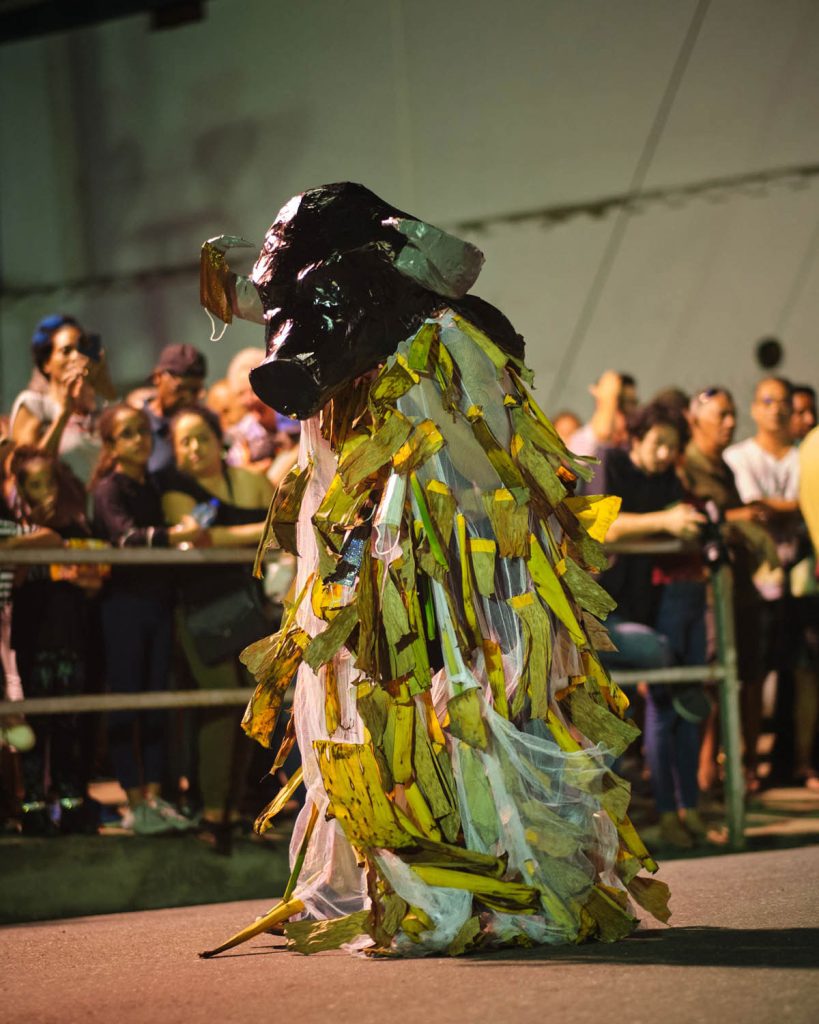When I was a child, driving through Santa Cruz was the most special journey — one my family regularly undertook. In that magical world (the backseat of the car), I could feel the rush of cool breeze as we entered the valley, driving through the green and red leaves of the cocoa trees, past the river and — if I was lucky — the herd of black buffalypso that often grazed on the gentle slopes along the road.
Something about those massive creatures always fascinated me — called to me. But as the years passed, I saw them less and less, until one day they disappeared for good. Maybe, like most of the island’s buffalypso (a breed of water buffalo developed in Trinidad in the 1960s), they had been culled to curb the spread of brucellosis. Few remained of the wild and domesticated animals that first had been bred right here, and now only thrived in other countries (to which they’d been exported).
In Trinidad, creation seems to come so easily to us. Too easily, perhaps, for us to really cherish what we have made.
My first cow mas (short for masquerade) was a buffalypso. It seemed fitting — depicting a traditional character that hardly ever graced the streets of Trinidad Carnival anymore … a memory of a memory. That year, I was the only cow in Port of Spain amidst a sea of feathers and sequins, in my cloak of dried banana leaves and black buffalypso head. It was my first time crossing a stage in a costume I’d made myself, but it was far from my first foray into mas.
I was a Carnival baby. I loved every part of the festival. But traditional mas, with its distinctive characters, always had my heart. At three, I was screeching down the streets chased by blue devils, hiding between my father’s legs, climbing up onto the stage of the Little Carib Theatre to tell the Pierrot Grenade how much I loved him, and then escaping back to my seat at the back when the Midnight Robber emerged. At school, I donned the Midnight Robber cloak myself, and tried out the Baby Doll bonnet, but nothing seemed to fit quite right. Until I found the cow. It called to me.
In the late 1940s and early 1950s, my grandmother played mas as a “milkmaid”, another portrayal that has died out over the years. In a way, my cow was a tribute to her — but in my typically gender-nonconforming fashion, I eschewed the femininity of the demure milkmaid for the animalistic anonymity of the cow.
Under the costume, I was free of my human identity, and I became something else — like so many others had before me. But to be a steward of this artform, I had to learn where it came from.
Cow bands were once a collective portrayal. In 1956, anthropologist Daniel J Crowley described “cattle or cow bands” as an “extinct” mas. “These bands no longer appear in Port of Spain, but are said to come out in a few country villages,” he wrote in an article for Caribbean Quarterly.
He described the bands as wearing dried plantain leaves from neck to knees, with cow horns fastened around their heads — likely taken from the abattoirs where most of the cow masqueraders traditionally worked. This was on Carnival Monday. On the Tuesday, they were decked out in colourful yellow and pink ensembles, with fancy jackets and even stockings.
But cow mas was not extinct. It was holding on, just like the hardy buffalypso. The second year I played, I met Norris Noel after crossing the stage during the traditional mas competition. His cow seemed to be closer to the traditional Tuesday wear — a brightly coloured, full-body fabric suit (with cow’s head of course). It was my first cow sighting in the wild. I was ecstatic.
In Trinidad, creation seems to come so easily to us. Too easily, perhaps, for us to really cherish what we have made
Later on, I managed to get in touch with another masman who carried the legacy of the cow: Reish Baboolal. He no longer lives in Trinidad, so doesn’t have any outlet for what is clearly still his passion. “I still miss Carnival,” he told me. “There is a calling … Trinidad has a spirit.” He told me of a retired Jab Jab who had told him something similar. “He said that when it’s Carnival time, his mood changes … that there’s a spirit that calls you.”
I knew exactly what he meant. His story felt very familiar to me, although his childhood in Cedros Carnival would have looked different from mine in Port of Spain. Like me, he’d observed the animals he portrayed. Seeing a cow charging and bucking in a field near where he used to work later inspired the energetic “mad bull” performance he’d become known for.
In Cedros, they called the mas con boeuf (Patois for “cow horn”). He had vivid memories of a man covered in a straw suit with a crocus bag over his head and two horns attached, dragging a biscuit tin tied to his waist. “You didn’t know who he was, or what he was,” Baboolal remembered.
It was at Viey La Cou, hosted by the University of the West Indies’ Department of Creative & Festival Arts, where Baboolal’s mad bull came to life. He didn’t play the streets, he said, because of the risk of a drunken reveller lighting the costume on fire. I remembered reading in Jeff Henry’s book Under the Mas how Dominica’s traditional sensay mas, also with leafy ensemble and cow horns, was banned in the 1960s after three young men were fatally burnt. This was why, Baboolal told me, cows wore a cloak of leaves that could be easily thrown off if they caught fire.
People used to respect the mas, he said. But not as much anymore.
In local history books, I found sparse records of cow mas’ origins in Trinidad — from the Venezuelan workers of the abattoirs back to the beginning of Kambule (aka Canboulay). But before that, nothing. The existence of regional forms of mas with cow heads — or dried leaves, or both — led me to think there must have been a West African connection.
I had seen pictures of a cow-headed, vegetal-costumed dancer from the Dogon people in Mali and Burkina Faso, and I reached out to a few African Art museums across the world to see if they had any similar depictions in their collections. Unsurprisingly, I found an embarrassment of riches. Anywhere there was cattle, there were cow masks. Vegetal costumes were similarly widespread — particularly using raffia fibres, which had also found their way to the Caribbean in animal mas like the bull, the donkey, and the raffia bear.
I chatted with Jane Woolard from the Savannah African Art Museum who shared pictures from their collection of bush cow masks from Nigeria, Burkina Faso, and Ghana/Côte d’Ivoire. “Many traditional African cultures use plant fibres to create their outfits and masks,” she said. “There are many subgroups of cultures that share practices.”
But cow mas was not extinct. It was holding on
In Robert Wyndham Nicholls’ book The Jumbies’ Playing Ground, I found another assortment of possible sources: horn-adorned garments from the Mandinka, Jola, Bainunk, Bagnun, Balanta, and Baga and Temne peoples, who were all stolen from their homes and brought to the Americas in significant numbers.
It’s difficult to pinpoint any specific group that brought what would become cow mas to the Caribbean; it could have been a blend of cultures. Nicholls describes “bush masquerades” and “horned masquerades” across Europe that could have been an influence as well.
What I thought was a deficit of information on a local tradition introduced me to a range of regional cousins, in the sensay bull, the cowhead, the Pai Bannan — and a wealth of information on the cultures our ancestors came from. They brought with them not only the first cattle to arrive in the Caribbean, but the story of cow mas.
I find myself compelled not only to play this mas but to find and collate as much of its history as I can, so that the next generation who hears it call to them will know where it comes from — where they come from. So that they can both preserve it, and create their own portrayals and stories that speak to their realities. Because culture moves, and breathes, and evolves to reflect the evolution of its people.

